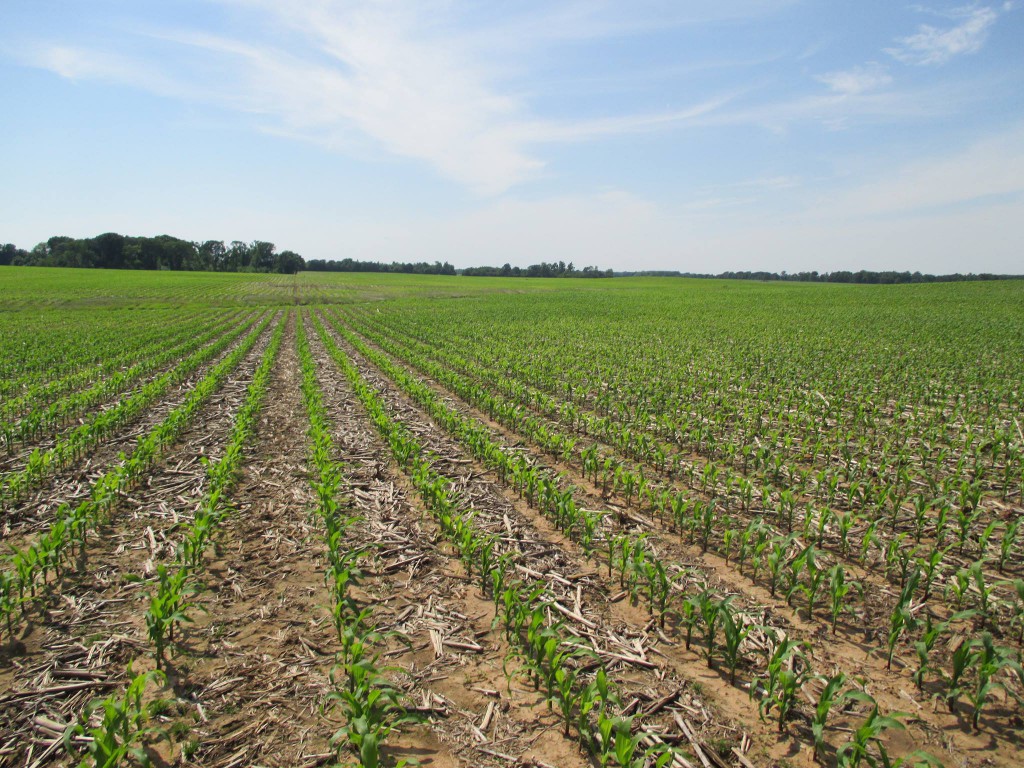By Hannah Grubbs, Sarah Beth Thompson, and Wesley Porter
As we move into peak water usage on most of our crops it is important to understand that if you are using sensors and have been tracking soil moisture at different depths, usage differs by depth. You should have observed water usage beginning at shallower depths and slowly occurring deeper and deeper into the soil profile as the roots develop. At this time, you still may not be seeing water usage occurring at deeper depths or depths deeper than 20 inches depending on crop.
It can be difficult to make decisions from soil moisture sensors, especially deciding how to handle multiple depths. Ideally, the sensor depths should be weighted based on estimated crop root growth or observed water usage throughout the season. In all of my research, we have done extensive reviews of estimated root growth over time and have developed an estimate or rooting depth for all four of the major row crops that we utilize in our irrigation scheduling. While we are providing an example of sensor weighting below, you should use local knowledge and crop growth estimations and observations to adjust your own weightings appropriately. What we mean by sensor weighting by rooting depth is as follows:

Similarly, the graph below shows a peanut crop during the month of June, which was planted on May 8th. The 4-inch depth is symbolized by the blue line, and it has the greatest response early season to water extraction, rainfall, and irrigation events. As you progress through the month and the roots continue to develop, the 12-inch depth (represented by the black line) begins to show water use deeper in the soil profile while the 20-inch depth (represented by the green line) is only showing minimal variation throughout the month. As shown by the 12-inch sensor, soil moisture is being depleted but the irrigation events only affect the 4-inch sensor, while the 12-inch sensor is constantly declining. Once mid-June was reached water usage was apparent in the 20-inch sensor. It has been slight but will continue to increase as the crop roots continue to develop and extract soil moisture. Similar to the 12-inche sensor the irrigation events have not refilled moisture at the 20-inch depth. To adequately refill soil moisture at both the 12- and 20- inch depths a slow rainfall is required.
Thus, it is critical to note that if the data you are making an irrigation decision from is using an equal average or equal weighting of all three depths throughout the season, you can see why during the beginning of the season you would be under irrigating the crop by factoring in soil moisture unavailable to the root zone, but as you move further into the season you could be over irrigating the crop, affecting both yield and profitability.

Ideally, the best method would be to monitor sensors within each year and at different sites to determine when water usage is occurring from the monitored depths and utilize these data to determine how and when to adjust the weightings on your sensors. Properly managing the weights of your soil moisture sensors will help provide an accurate depiction of what is happening within the soil profile. Having access to these precision agriculture technologies can be very beneficial, but proper management of these sensors is important. Inaccurate data could be worse than no data at all. Being able to trust your sensors and make appropriate decisions from them will help you make more accurate and efficient irrigation management decisions.
